Our final day- a walk through pastoral England with wide views, ancient battlefields and a racecourse ahead, before a final descent into an historic city, with it’s Roman Baths and the architectural splendour of the Crescent and Abbey.
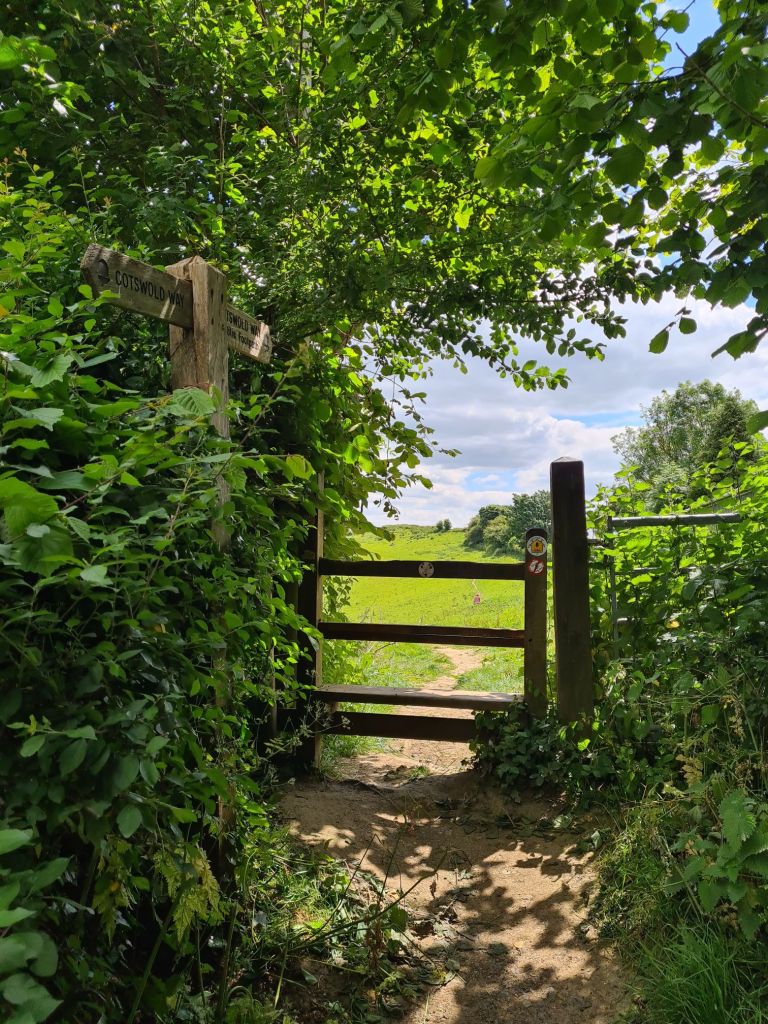
Day Eleven: Cold Ashton to Bath. 10 miles/16km
The two of us were pleased to leave our overnight halt. Our fellow walkers, also stopping here, have been fine, but our host! She is so very weary of the whole B&B malarkey and makes minimal effort with almost every aspect. The room was clean, but everything seemed to be an effort. We felt unwelcome from the minute we walked in. I wouldn’t return if you paid me.
Our final day. It is a few miles of mostly simple country walking into Bath. So much so that two of the table of eight at breakfast were skipping this section and catching a bus instead. A shame, as both of us enjoyed this days walk immensely.


After braving the morning rush of traffic, crossing the road to continue our trail, it was a short quarter mile walk across fields to Cold Ashton where we stopped in at the parish church for a mooch about.
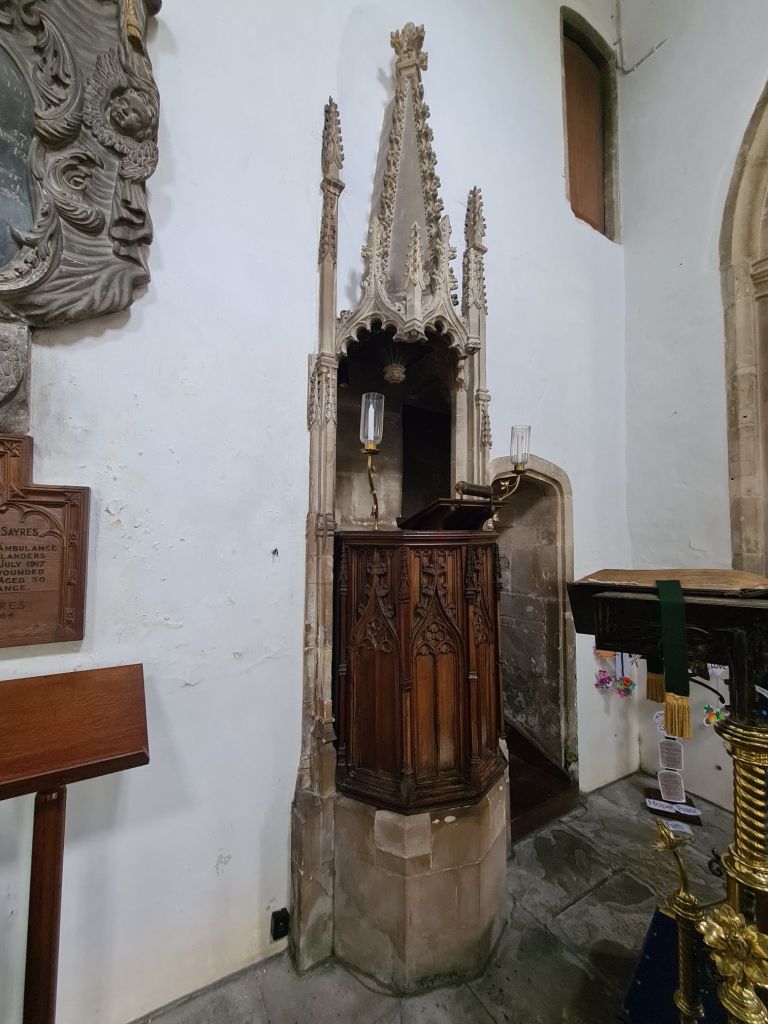

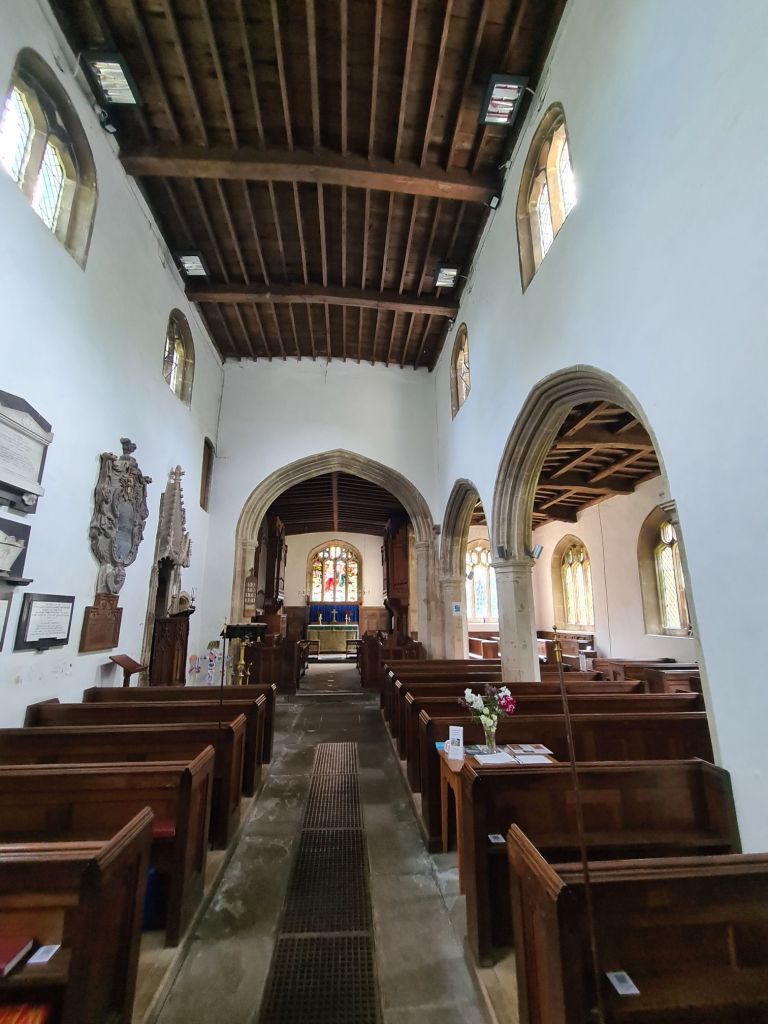
Cold Ashton, though a small place, does seem to do things in a big way. Even the gatehouse to the Manor House, off the modest country road we were following, was an impressive piece of work. The village enjoys grand views from its flanks.

From Cold Ashton we followed the road more or less downhill, moving onto grassy fields before crossing a small stream and, inevitably, beginning the climb back up. Buzzards were being mobbed by crows, that ‘avian SAS’, while further on a pair of Red Kites was suddenly joined by another. Evidence of a successful brood? Back on ground, we were heading to one of the decisive battlefields of the English Civil War.
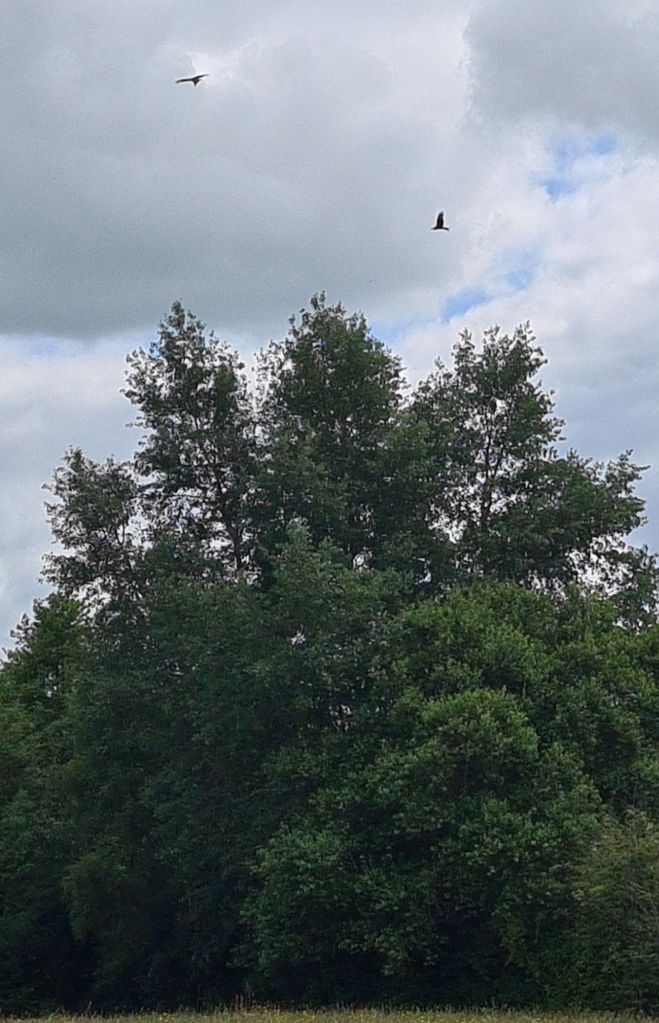
.
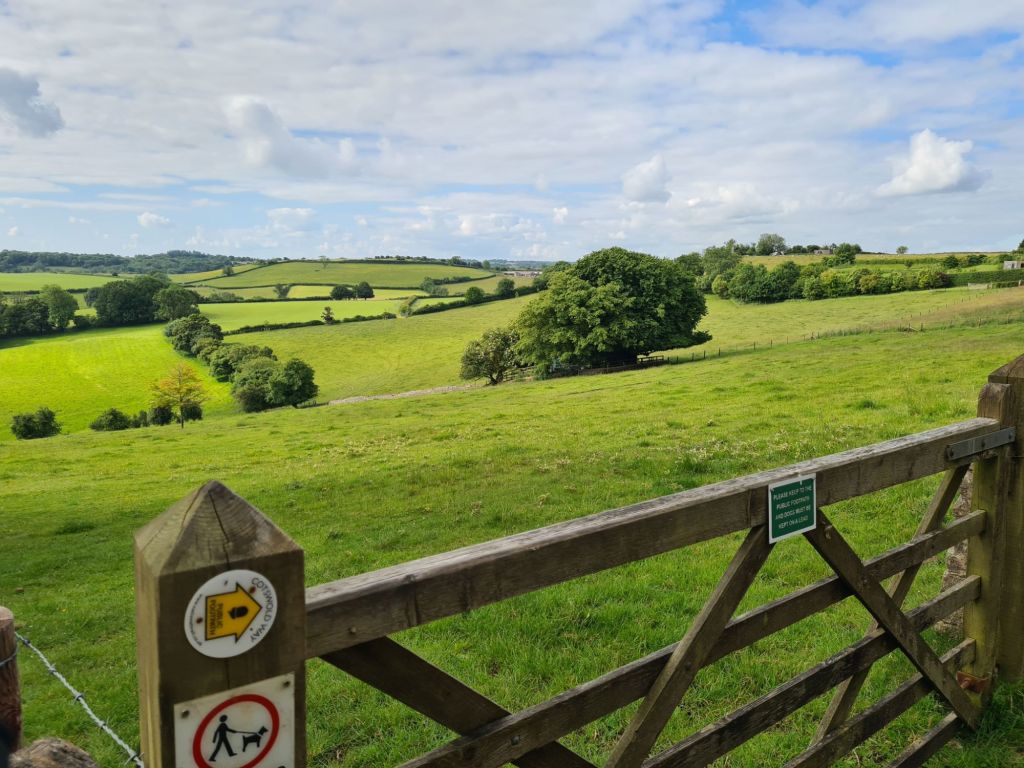


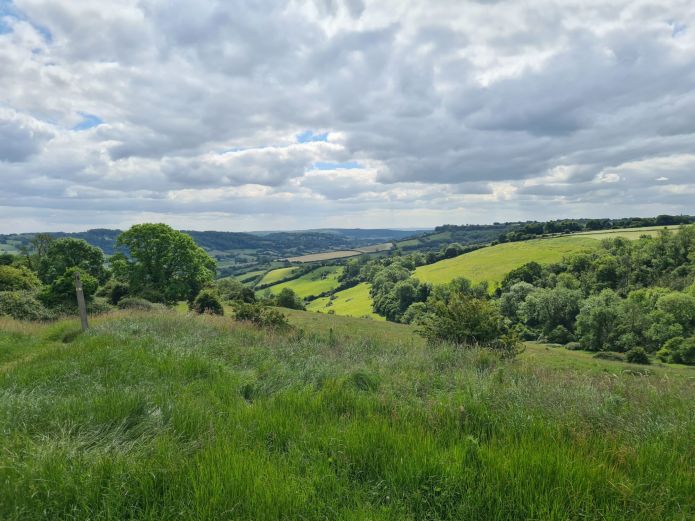
Our path bordered yet another golf course, then briefly, the Bath Race Course. But the only frenetic activity we could see was a happy, loud and excited bunch of children on a field trip. We had one last fort to find. The most westerly of the escarpment forts. There wasn’t much to the Iron Age Little Down Hill Fort. It covers an area of 15 areas (6 hectares), but about all I could see were the rampart and ditch beside the path.
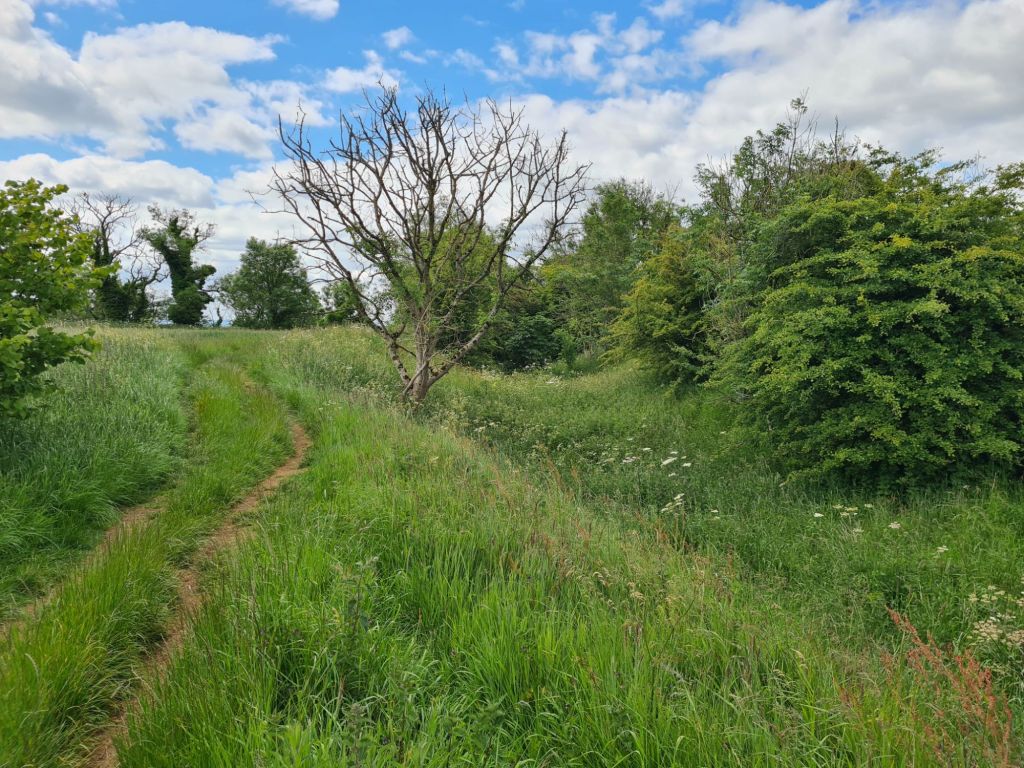
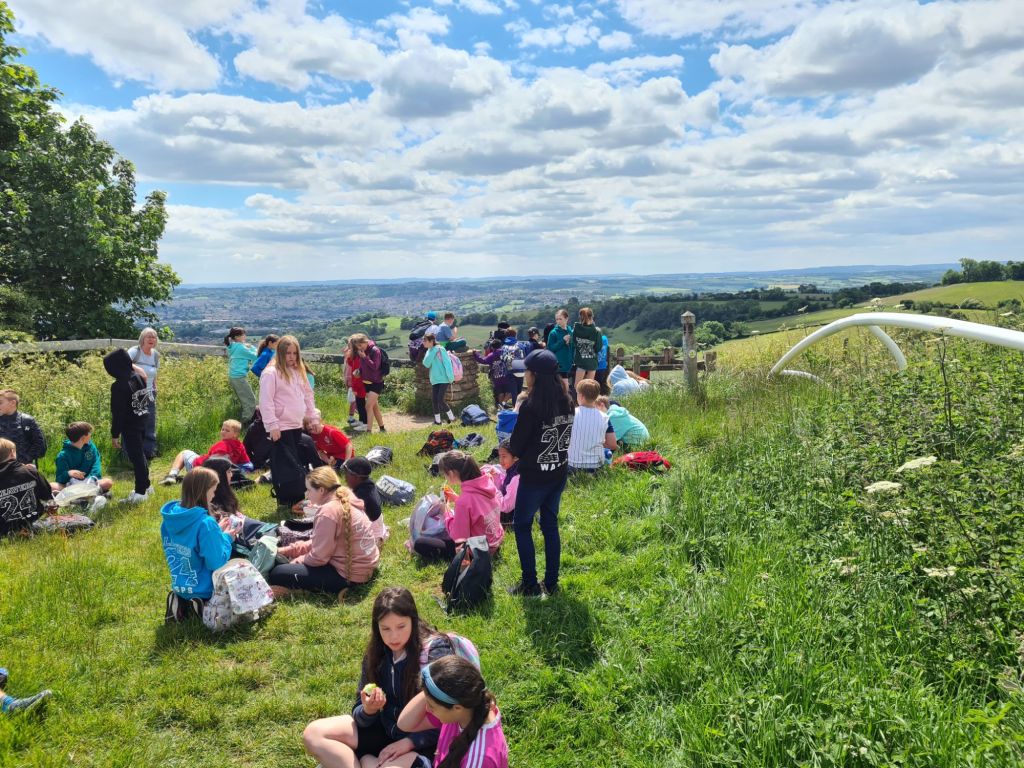
On the walk down from Kelstone Roundhill, with Bath stretched out before and below us, it seemed as though life was good. But not for all. I could see a dismounted horserider, stroking and calming her horse, and I called, is everything alright? There had been an accident. Two of the US hikers had arrived at this point before us and had met two horses, and their riders coming up the bridleway. They had somehow come between the two horses, on a raised bit of ground beside the path, the gated entrance to the meadow above. The two horses had kicked off, literally. Apparently, the two horses didn’t like each other and it became a bit of a melee, resulting in one horse on the ground, crushing the gate, taking a rider below her. She then bolted away into the meadow. We arrived a couple of minutes into the aftermath. The rider was bleeding profusely but was padded and otherwise OK. The air ambulance arrived as we left the scene. The spooked horse being walked back down the trail.
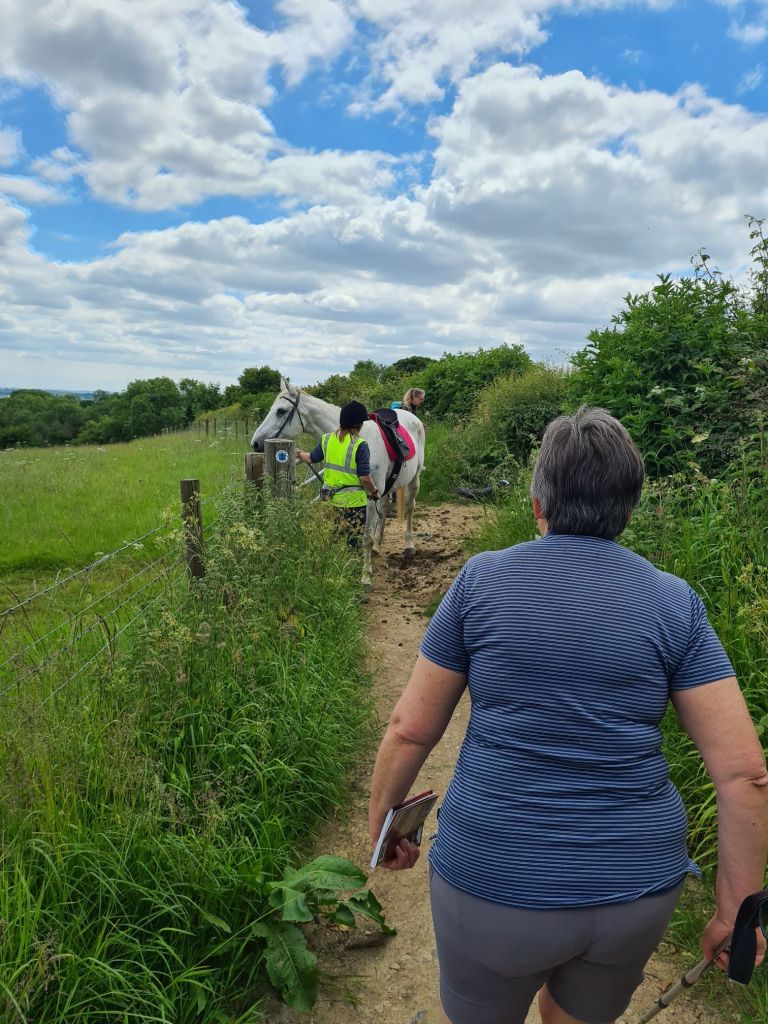
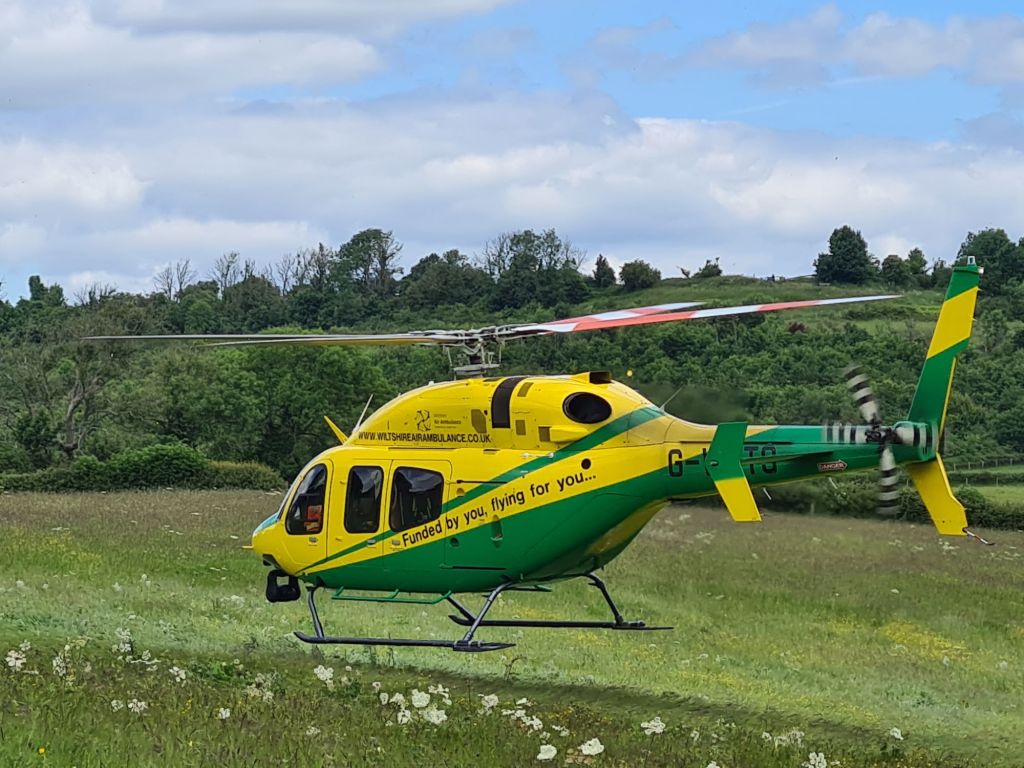

When I had originally seen the route the trail takes in to Bath I was baffled. The trail drops down into Weston, then goes straight across and out the other side, before climbing steep slopes up on to Primrose Hill. Then follows the edge of town before promptly dropping back down the contours. But having now walked it, it is an excellent entry into Bath.

Having climbed half way up the slopes above the city, the Cotswold Way follows parks and avenues of beech trees down Sion Hill into Royal Victoria Park before the dramatic introduction of the Georgian splendour of the Royal Crescent quickly followed by the Circus.


Even before ending our walk in front of the Abbey we passed The Raven, one of the best real ale pubs in Bath, so we popped in for a couple of pints- Raven Ale, 4.7% and Raven IPA, 5.5%, the latter sadly tap not draught, and half of cider for Mrs TPOTC, with a shared ploughman’s. Then, a short walk to the front of the Baths and Abbey for the official end point (or start) of the Cotswold Way, and persuading a couple to take our end-of-trail photo.
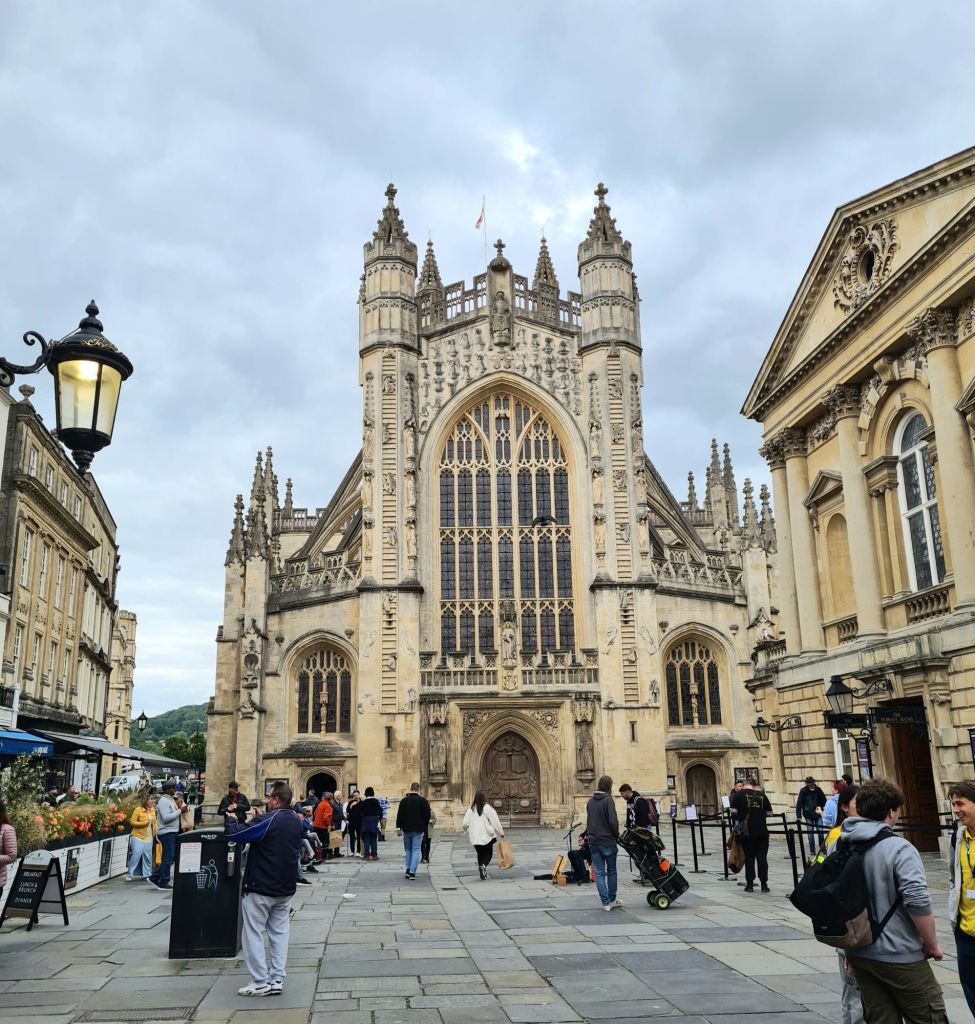
The termini is marked by a stone set into the pavement. A sister to the one we had left in Chipping Campden 102 miles ago. However the outer verse on this one differed.
“Stand ye in the ways and see, ask for the old paths, where is the good way, and walk therein, and ye shall find rest for your souls”
Tonight’s accommodation is a Guest House situated close to the centre of Bath. A pretty much ideal location so we had booked a further two nights here to give us time to explore this beautiful and interesting city. We are also meeting up with friends which makes for a perfect end to our saunter down the Cotswold escarpment
Mrs TPOTC and I had chatted about which was our favourite of our overnight stops. Old Sodbury was very much the best overall, but Joan is retiring from the business, so that no longer becomes an option. Without going into to much detail. If we could have combined our hosts from Chipping Campden, our bathroom and window view from Stonehouse, room and bed size from Cheltenham we would have had the perfect combination. Which goes to show, each halt has its pluses and minuses and it is best to go with the flow and accept the foibles of any overnighter.
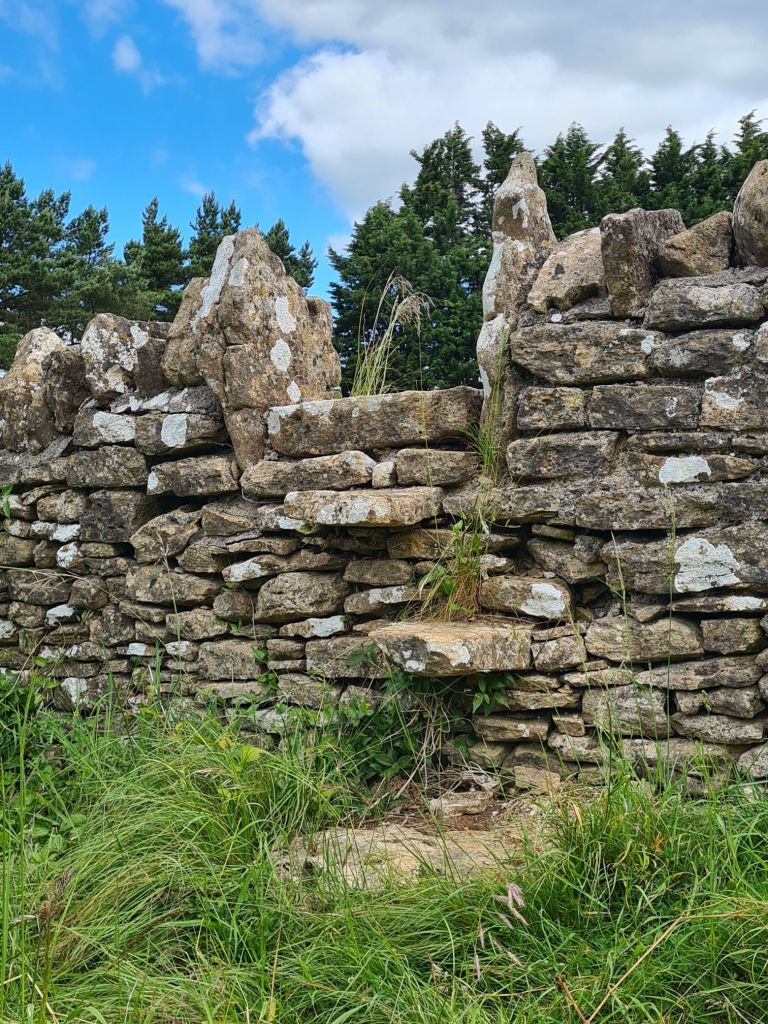

Most people walk the Cotswold Way in between 6 and 10 days. This, our final day was our eleventh. It mattered not. We had not been in a race, this was our annual summer holiday and our gentler pace had not only given us time to explore, linger, take in cafes and pubs, but had also enabled an injured Mrs Three Points of the Compass to actually complete the trail. The Cotswold Way is a gem of a long distance footpath. I had been looking forward to it a great deal and can thoroughly recommend it. Having knocked off another of the National Trails I am keen to get another under my belt. This is already scheduled in for next month and will mark a return to my normal manner- a solo backpacking, mostly wildcamping and slightly more demanding itinerary. More on that to follow.
It had been a decent trail with much of interest and our choice of provider had been borne out by our encountering little in the ways of problems. The two of us have already decided on which of the trails we shall be walking in similar sedate fashion next year. Our previous trail walked in the same manner as this year was another national long distance path, that we completed in 2023. The daily posts for that 185 mile/298 km trail can be seen via this link: Trail talk: The Thames Path.
- Cotswold Way- National Trail
- Cotswold Way: Chipping Campden to Stanton
- Cotswold Way: Stanton to Winchcombe
- Cotswold Way: Winchcombe to Dowdeswell
- Cotswold Way: Dowdeswell to Birdlip
- Cotswold Way: Birdlip to Painswick
- Cotswold Way: Painswick to King’s Stanley
- Cotswold Way: King’s Stanley to Dursley
- Cotswold Way: Dursley to Wotton-under-Edge
- Cotswold Way: Wotton-under-Edge to Old Sodbury
- Cotswold Way: Old Sodbury to Cold Ashton (Pennsylvania)

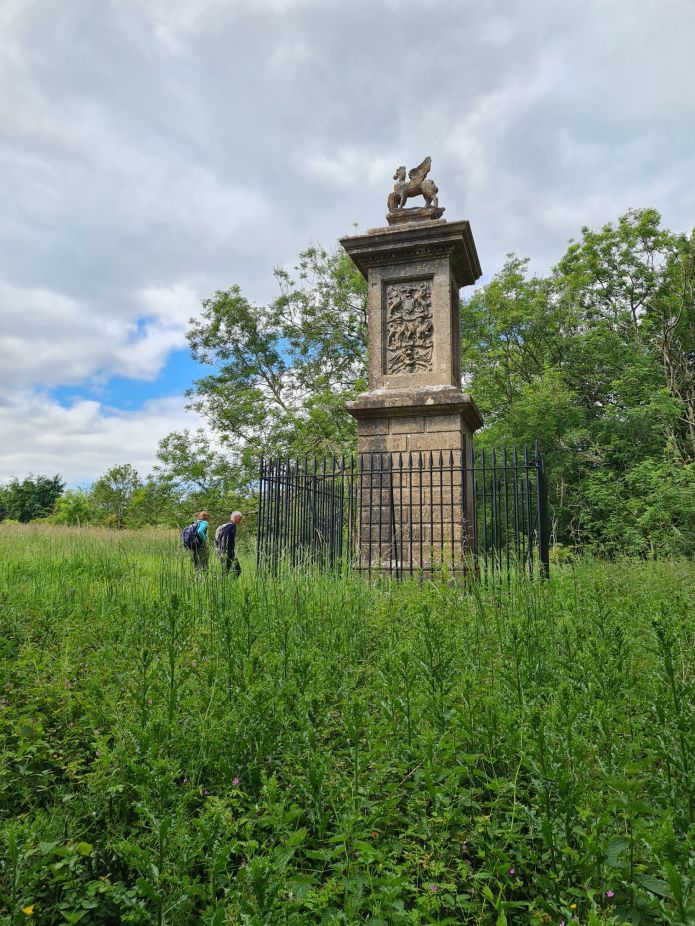
what a wonderful account of a long walk . The two of you looked very happy / satisfied . Thank you for pictures , all the centuries old historic sites .
i will be lookin forward to hearing about other camping .
LikeLike
Pleased that you got something from it. Best wishes
LikeLiked by 1 person